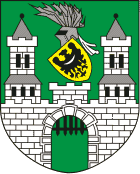Zielona Góra
City: Zielona Góra
Country: Republic of Poland
Address: Urząd Miasta Zielona Góra ul. Podgorna 22 Zielona Góra 65-424 POLSKA
Official page: zielona-gora.pl
Cooperation agreement: 06.01.2001
Zielona Góra is a city in western Poland, one of the two administrative centers of the Lubusz Voivodeship, located at the intersection of the historic Wrocław-Szczecin road. The population of the city is 118.6 thousand people. The linear distance from Zielona Gora to Ivano-Frankivsk is 732 km.
The first mention of Zielona Góra dates back to 1222. Around 1323, the settlement, located in a small picturesque valley of the Odra River, was granted the status of a city. The granting of the Magdeburg right to self-government is connected with the large influx of German immigrants to this area.
During the Hussite wars (the 1430s), protective walls were erected around the city, but as the city grew and expanded, the walls later had to be dismantled. Now only small fragments of them remain.
The central areas of modern Zielona Gora are interesting for the stone buildings of the XIX century, many of which have survived in the old part of the city. But most of the buildings of the Old Town were built in the early twentieth century, mostly in an eclectic style. As in many other Polish cities, the historic center of Zielona Gora is a market square with an old town hall of the XV century. Initially, the town hall was wooden, but later it was repeatedly rebuilt. The late Gothic cathedral of St. Jadwiga - an ancient monument of sacred architecture preserved in Zielona Góra - was built in 1272-1294. While in Zielona Góra, be sure to visit the Museum of the Lubuskie Land, located in the building of the former administration, built in 1890. It houses the only branch of winemaking in Poland, which presents special equipment and vessels for wine.
In general, the Green Guru is often called the Wine City or the City of Bacchus. From the very beginning, the name of the city is associated with viticulture. The first mention of local vineyards dates back to 1314, but there is an assumption that the production of the famous white wine here began in the XII century. Wines made in Zielona Góra were exported not only to other cities in Poland but also abroad. The most popular variety of local white wine was Monte Verde. Over time, wine production in the area declined due to climate change. At present, wine is no longer produced in Zielona Góra, the last factory that closed in the early 1990s. Every September, various presentations, sports and trade events are organized in Zielona Gora for a whole week. Today the city also has well-developed engineering, textile and food industries.
